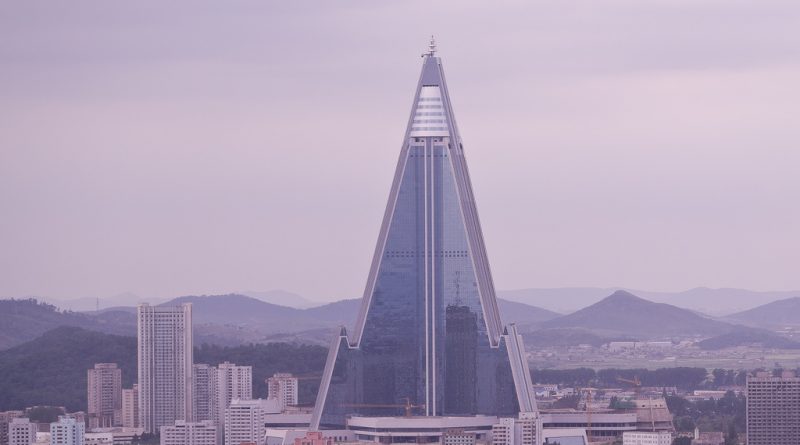Ryugyong Hotel
Ryugyong Hotel is a 105-story, 330-meter and 360,000 square metres of interior space, and it’s no use high hotel located in Pyongyang, North Korea.
The Hotel was originally scheduled to open on April 13th 1989, but construction was halted due to the economic difficulties faced by North Korea. Construction resumed in 2008 and it was completed in 2011. The hotel has never opened for business because of sanctions placed on North Korea by other countries.
The Ryugyong Hotel: North Korea’s Reigning Monstrosity
The Rygryung Hotel is a luxury hotel that is located in Pyongyang, North Korea. It was built by the Ryugyong Group, a company that the North Korean government had established.
The Hotel is a 105-story pyramid-shaped skyscraper in Pyongyang, North Korea. The hotel was originally intended to be completed by 1989, but construction was halted when North Korea experienced an economic crisis following the collapse of the Soviet Union. It is now scheduled for completionsoon. The Ryugyong Hotel is North Korea’s one and only mega-tower. It was built to be the world’s largest hotel, but construction stopped in 1992 due to financial difficulties.
The Hotel is one of the most visible symbols of North Korean dictatorship and oppression. It has been deemed “the world’s most mysterious building” due to its incompleteness, strange shape and odd location on top of a hill. The Ryugyong Hotel has been a source of controversy since its inception. It has been called a “symbol of North Korean isolationism” and is often referred to as “the world’s worst building.”
The Hotel is symbolic to North Korea because it represents how their economic ambitions were never fulfilled and how they were unable to build a successful economy with an international reach like other countries did.
North Korea is a country that is not very welcoming to foreigners and it does not have many allies. The Ryugyong Hotel was supposed to be the first step in changing this image. When construction stopped, so did their dream of opening up their country to foreigners and making friends abroad.
It has been speculated that the building’s design is based on the shape of an exploding rocket, with a number of setbacks to allow for an even distribution of weight. The building is still under construction with no completion date set. It is believed that when completed it will be one of the tallest buildings in North Korea and among the tallest buildings in Asia.
Grandiose visions
It all began in 1987, on the eve of the Seoul Olympics: South Korea had just completed the luxurious Stamford Hotel in Singapore, which required North Korea to outdo its eternal rival. They decided to go ahead and build the world’s tallest hotel, which would inspire awe among foreigners.
“Ryugyong” means “willow capital”, which was the name of Pyongyang.
The design of the building was entirely consistent with the idea: a sort of arrow-shaped pyramid formed by three concrete “wings” that converge geometrically at one point and are topped by a huge rotating cone. However, there was no money for all this beauty from the start: a special company was set up to attract investment and the government tried hard to attract foreign investors. They even promised to allow casinos and nightclubs in the building, a freedom unheard of in North Korea. The hotel, still unfinished, was laid out in advance, with 3,000 rooms and 7 restaurants, and is expected to be open for the 13th World Youth and Student Festival in 1989.
Something went wrong.
First, due to lack of building materials and other problems, the opening was postponed, and then, in 1991, the friendly USSR collapsed and a financial crisis broke out in North Korea. Here, of course, the hotel business was at a standstill. The construction itself was almost finished, only the windows, communications and equipment were missing. According to the Japanese media, the construction cost about 750 million dollars, i.e. 2% of the republic’s GDP.
The government had to look for investment again and, while the bourgeois jingled their calculators, remove Ryugyong from maps and postage stamps and build another, less pretentious “five” on the bank of the Tedongan River. In 2008, the Egyptian group Orascom stepped in and agreed to rebuild the skyscraper in exchange for the right to launch its own mobile phone network in the DPRK.
The renovation was timed to coincide with the 100th anniversary of Kim Il-Sung’s birth: the façade was glazed, antennas were placed on the roof and the interiors were designed. In 2012, the Kempinski hotel chain said it would manage the renovated hotel, but the US reportedly threatened it with sanctions and the hotelier had to wash its hands of it. Construction was frozen again, security guards were posted along the perimeter, and suddenly there was a flurry of activity: adjacent land was landscaped, access roads were repaired… and again silence.
LED screens have recently been installed on the façade, and at night the tower lights up in the colours and emits clear slogans.
You may also like:

